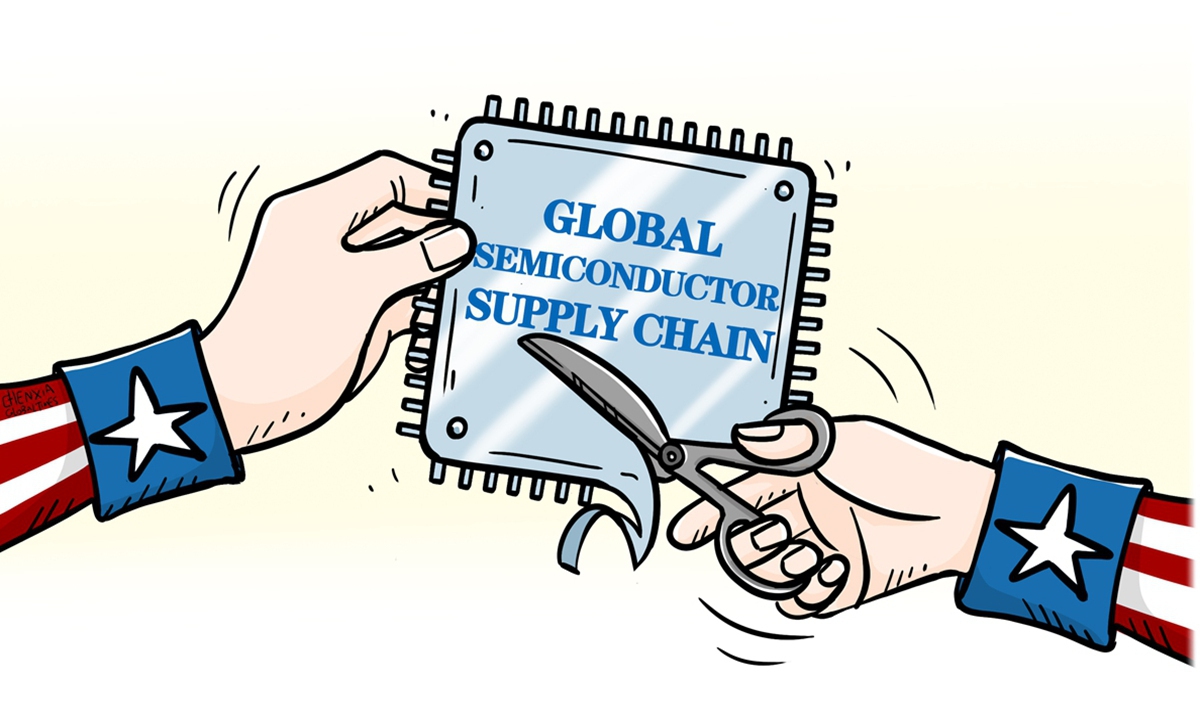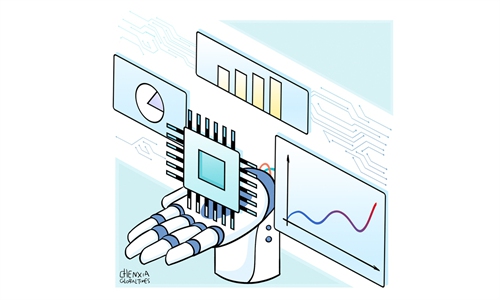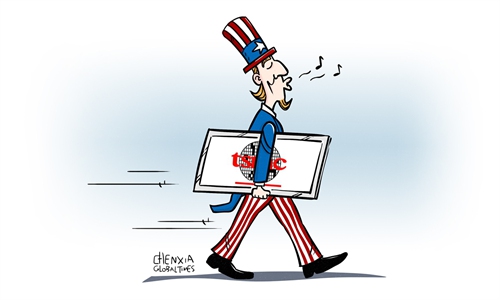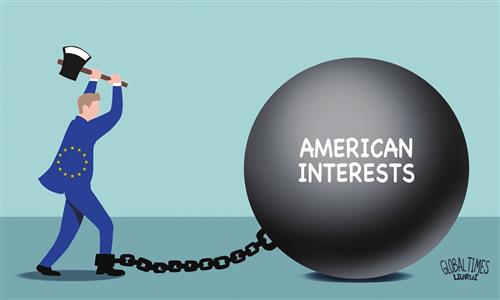
Illustration: Chen Xia/GT
The US government is expected to award billions of dollars in subsidies to top semiconductor companies, including Intel and TSMC, in the coming weeks to help build new factories, the Wall Street Journal (WSJ) reported on Saturday. However, even if the report is true, subsidies can only play a limited role in underpinning a renaissance in US manufacturing.For a long time, there has been much discussion about measures to subsidize manufacturers in the US to offset relatively high production costs. However, less attention has been paid to sales of goods made in these new facilities.
Electronics manufacturers have long abandoned America for cheaper countries, especially China. As a result, they have built up a complete industry chain with strong demand for core components and intermediate products such as semiconductors.
China is reportedly the world's largest importer of chips, which are utilized in a range of products from smartphones to electric vehicles. As the world's factory, China has made itself an important import market for core components and other intermediate industrial products.
With a large, diverse and affluent population, the US is one of the world's largest consumer markets and importers. However, US imports primarily focus on consumer electronics and manufactured goods, rather than intermediate industrial products.
Although Washington has embraced the idea of subsidies for key industries and measures to bring manufacturing back from overseas, it is widely believed that the US is unlikely to position itself as a labor-intensive processing and assembling base.
As a result, US demand for intermediate industrial products will remain relatively low compared to developing countries, especially China.
The US government is spending lavishly to revive manufacturing, and its focus appears to be on high-end rather than labor-intensive manufacturing. With the CHIPS and Science Act signed into law in 2022, the Biden administration has introduced sweeping tax benefits and subsidies aimed at re-energizing American manufacturing by incentivizing the domestic production of semiconductors.
However, it will have to address the thorny issue of finding export markets for the products of the new capacity for intermediate industrial production. Without good sales, a renaissance in US manufacturing will be just empty words. A virtuous cycle is key to a prosperous growth engine, as good sales create the motivation for private investment.
New chip factories in the US may take years to build and may not be able to offer the industry's most advanced technology when they begin operations. At that time, new US production efforts may pose a major risk to the global supply-demand balance, resulting in overcapacity. US companies will become the biggest victims of that overcapacity. Some of those companies have already seen their profits fall as Washington works to decouple the US high-tech sector from China's economy.
Subsidies can't save US manufacturing. On the contrary, non-market measures are likely to create overcapacity. Instead of subsidies, what American manufacturing companies need is a strong market. The US business community has a clear understanding of this.
As reported by the WSJ in July 2023, the US chip-industry trade group Semiconductor Industry Association said the Biden administration's potential curbs on sales of advanced semiconductors to China could undermine huge new US government investments in domestic chip production.
US manufacturers ended 2023 on a sour note, according to S&P Global's survey. Some analysts believe that manufacturing was a drag on the economy in the fourth quarter. There is still a long way to go in revitalizing US manufacturing.
If Washington wants to stimulate exports of manufactured goods, it should return to free trade, stop its decoupling approach as soon as possible, and get the bilateral economic relationship with China back on the right track.
History has proven that close cooperation between China and the US is of great significance, not only to the two countries but also to world prosperity. Hopefully, the US can stop attempts at tech decoupling and reduce government interference in business and global supply chains.



